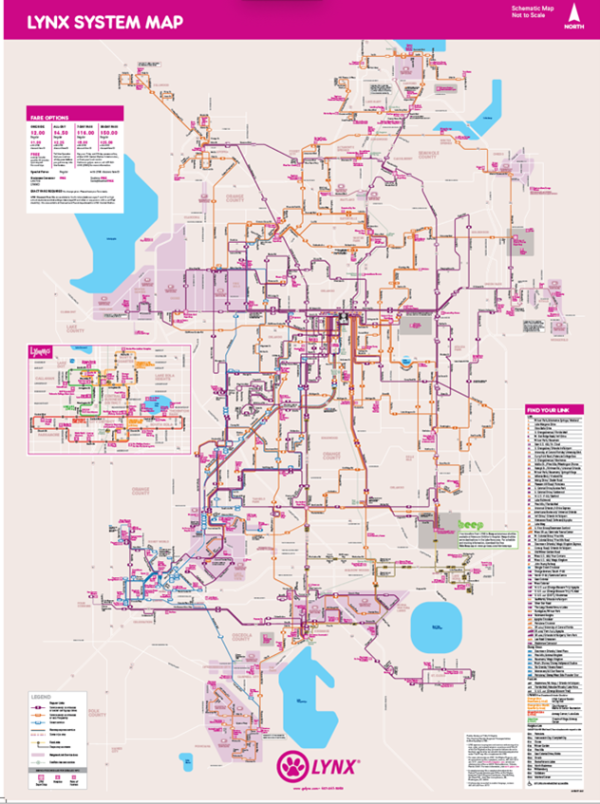The Interplay Between Transportation and Economic Stability
by Alexis Tsoukalas, MSSA; 2020-2021 Thrive Economic Stability Fellow
Central Florida’s 2.5 million residents (and 70+ million tourists) require a personal vehicle for most activities, including work and school commutes and everyday errands. This context has major implications for the economic stability of our community.
Traffic is increasingly congested at all times of the day, and roads and most communities are not walkable for residents. Four of the five most dangerous places for pedestrians in the United States are in Central Florida, with the
The SunRail commuter train and LYNX Bus Service are the two main public transit options for Central Floridians. The former has only been in existence for seven years and has potential, as more stops and stations are added. The latter is Central Florida’s regional transit authority and subcontracts with numerous community-based organizations to hit its transportation goals.

A major issue with both options is lack of access to rural and more suburban areas of Central Florida. While Orlando has a growing vision for public transit, the further out you go from there, the greater the miles between bus or train stops and the less reliable travel times are. This LYNX map shows routes in blue and orange that offer select or less-frequent services are the norm in most areas of Central Florida. If you don’t live in Central or Southwest Orange County, your options for public transit remain limited. Yet Central (Orlando) and Southwest Orange (mainly, the theme parks and area hotels) are precisely where the highest concentration of jobs are.
Most SunRail stations still require a drive to the nearest station and only 16 exist thus far, so its utility as an alternative to private vehicle ownership remains to be seen. Add standing outside in the Florida heat or frequent rain with little shelter to the equation, and it becomes clear that our transit needs work if it is to be a viable option for more residents.
As analysis has pointed out, the issue of transportation is really an issue of access. Access to gainful employment, health care facilities, quality food, child care and education, and affordable housing can all be cut off for Central Floridians who cannot afford a reliable personal vehicle, lack a driver’s license due to immigration status, or lack robust public transit nearby. As a result, Central Florida’s current transportation approach hinders economic stability for too many.
So what can we do? For now, we can commit to sharing our feedback with local leaders and policy makers and trying alternate transportation options as they become available. As with any systemic issue, it sometimes moves slowly, but we have to keep pressing forward.
“The only true and sustainable prosperity is shared prosperity.” –Joseph E. Stiglitz, Nobel laureate economist and professor
